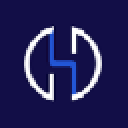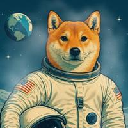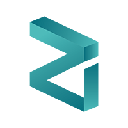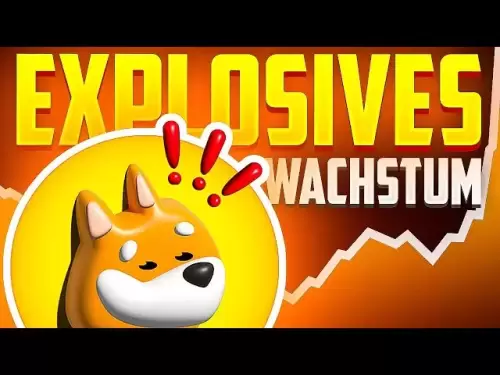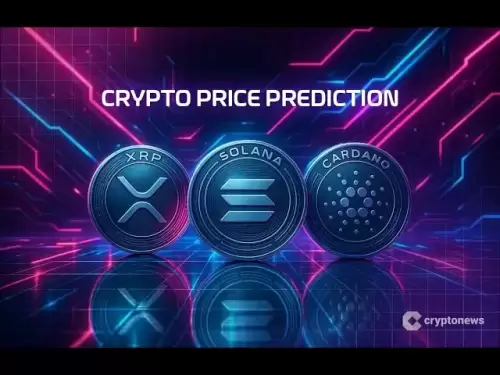-
 Bitcoin
Bitcoin $118,209.3536
1.16% -
 Ethereum
Ethereum $3,151.7546
5.98% -
 XRP
XRP $2.9277
2.35% -
 Tether USDt
Tether USDt $1.0000
0.00% -
 BNB
BNB $689.7099
1.26% -
 Solana
Solana $163.4270
1.91% -
 USDC
USDC $1.0000
0.02% -
 Dogecoin
Dogecoin $0.1983
3.74% -
 TRON
TRON $0.3008
0.51% -
 Cardano
Cardano $0.7435
2.86% -
 Hyperliquid
Hyperliquid $47.6547
-0.48% -
 Stellar
Stellar $0.4625
2.79% -
 Sui
Sui $3.9921
2.71% -
 Chainlink
Chainlink $16.0608
4.23% -
 Hedera
Hedera $0.2348
1.56% -
 Bitcoin Cash
Bitcoin Cash $496.6985
1.25% -
 Avalanche
Avalanche $21.9038
5.41% -
 UNUS SED LEO
UNUS SED LEO $8.8356
-1.88% -
 Shiba Inu
Shiba Inu $0.0...01364
5.31% -
 Toncoin
Toncoin $3.1102
4.35% -
 Litecoin
Litecoin $95.9756
3.59% -
 Polkadot
Polkadot $4.0925
5.78% -
 Monero
Monero $333.7622
-1.44% -
 Uniswap
Uniswap $9.1968
2.25% -
 Bitget Token
Bitget Token $4.6378
6.23% -
 Pepe
Pepe $0.0...01282
6.77% -
 Dai
Dai $1.0002
0.03% -
 Ethena USDe
Ethena USDe $1.0005
0.00% -
 Aave
Aave $329.9143
4.49% -
 Bittensor
Bittensor $441.4995
6.89%
Combining on-chain data, analyzing the health status of Ethereum
Ethereum's on-chain health assessment, combining active addresses, transaction count, gas consumption, and block size, provides valuable insights into its usage, demand, and overall stability.
Feb 27, 2025 at 01:13 am
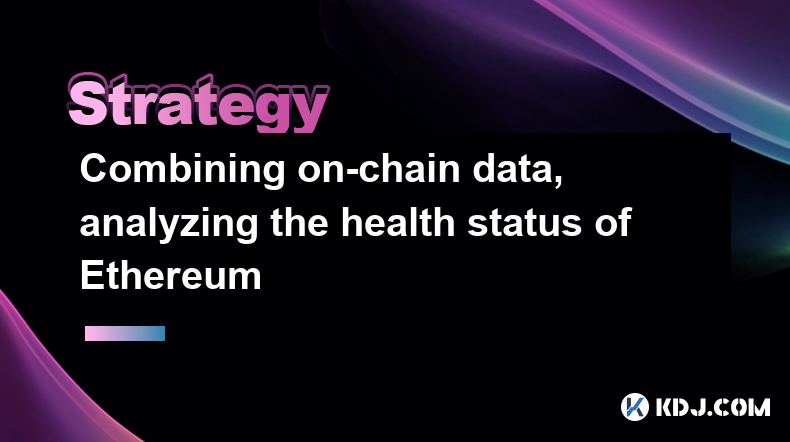
Key Points
- Ethereum's on-chain health can be assessed using a combination of metrics
- These metrics include active addresses, transaction count, gas consumption, and block size
- By analyzing these metrics, we can gain insights into the network's usage, congestion, and overall health
Analyzing Ethereum's On-Chain Health
To assess the health of the Ethereum blockchain, we can analyze a combination of on-chain data. These metrics provide valuable insights into the network's usage, demand, and overall stability. Here are some of the key on-chain metrics to consider:
- Active Addresses: The number of active addresses on Ethereum represents the number of unique addresses that have sent or received transactions within a specific period. A high and increasing number of active addresses indicates a growing and active user base, which is a positive sign for the health and adoption of the network.
- Transaction Count: The number of transactions processed by the Ethereum network is another important metric to track. A high number of transactions indicates a high level of activity and demand on the network. However, it can also lead to increased congestion and gas fees.
- Gas Consumption: Gas is the unit of computation used on the Ethereum network. The amount of gas consumed by transactions represents the computational resources used to process them. High demand for transactions can lead to peaks in gas consumption, resulting in higher gas fees and potential congestion.
- Block Size: The size of Ethereum blocks measures the amount of data stored in each new block added to the blockchain. A larger block size can accommodate more transactions, but it also can impact network speed and congestion. The ideal block size is typically a balance between accommodating transactions and maintaining efficient network performance.
By combining these metrics, we can gain a comprehensive view of the health of the Ethereum network. High active addresses, a steady increase in transaction count, moderate gas consumption, and an optimal block size all contribute to a strong and healthy blockchain ecosystem.
FAQs
What factors can affect Ethereum's on-chain health?
- Changes in user behavior, market conditions, and protocol upgrades can impact Ethereum's on-chain health.
Why is it important to monitor Ethereum's on-chain health?
- Monitoring on-chain health allows us to track network usage, demand, and potential areas of congestion or growth opportunities.
What are some other metrics that can provide insights into Ethereum's health?
- Other metrics such as block confirmation times, average gas fees, and network hash rate can provide additional perspectives on network performance.
How does Ethereum's on-chain health compare to other blockchain networks?
- Comparisons with other networks can highlight the relative strengths and areas for improvement of Ethereum's blockchain ecosystem.
What are the potential risks or challenges that could impact Ethereum's on-chain health?
- Network congestion, scalability limitations, and security vulnerabilities are some of the potential risks or challenges that could affect Ethereum's on-chain health.
Disclaimer:info@kdj.com
The information provided is not trading advice. kdj.com does not assume any responsibility for any investments made based on the information provided in this article. Cryptocurrencies are highly volatile and it is highly recommended that you invest with caution after thorough research!
If you believe that the content used on this website infringes your copyright, please contact us immediately (info@kdj.com) and we will delete it promptly.
- Avalanche Onchain Insights: Token Relations Unveils Comprehensive Dashboards
- 2025-07-16 22:50:13
- Standard Chartered's Crypto Leap: Regulated Trading and Stablecoin Focus
- 2025-07-16 23:30:13
- Rare Coin Alert: Darwin, Ipswich, and Hidden Treasures!
- 2025-07-16 23:30:13
- Crypto ROI Revolution: Is BFX the Next Big Thing?
- 2025-07-16 21:30:13
- Dogecoin, HBAR, and Partnerships: A Tale of Memes vs. Utility
- 2025-07-16 21:30:13
- Cha-Ching! That £2 Coin Could Be Worth a Mint!
- 2025-07-16 22:10:12
Related knowledge

How to avoid common crypto investment mistakes?
Jul 13,2025 at 01:35am
Understanding the Risks of Crypto InvestmentInvesting in cryptocurrency can be highly rewarding, but it also comes with significant risks. One of the ...

What is a long-short crypto strategy?
Jul 15,2025 at 10:56am
Understanding the Basics of a Long-Short Crypto StrategyA long-short crypto strategy is an investment approach where traders simultaneously take long ...

What is a long-short crypto strategy?
Jul 11,2025 at 01:28pm
Understanding the Basics of Long-Short Crypto StrategyA long-short crypto strategy is an investment approach where traders take both long and short po...

How to use the RSI indicator for crypto?
Jul 12,2025 at 03:56pm
Understanding the RSI Indicator in Cryptocurrency TradingThe Relative Strength Index (RSI) is a momentum oscillator used to measure the speed and chan...

Is copy trading a good strategy for crypto beginners?
Jul 12,2025 at 08:28am
Understanding Copy Trading in the Cryptocurrency MarketCopy trading is a strategy where novice traders replicate the trades of experienced investors a...
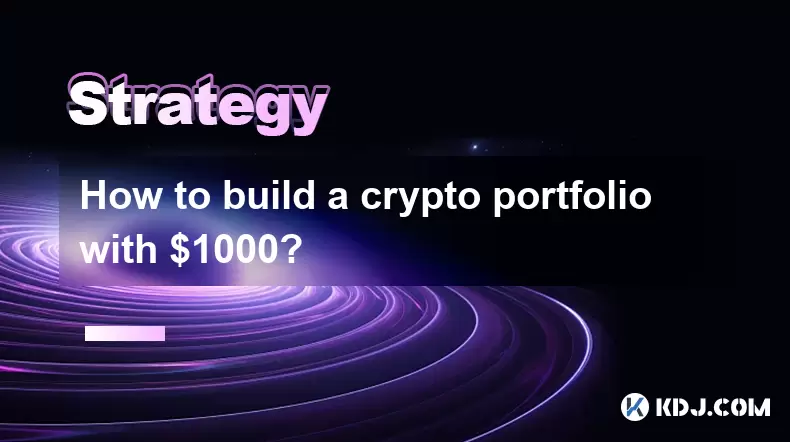
How to build a crypto portfolio with $1000?
Jul 13,2025 at 08:14pm
Understanding the Basics of Cryptocurrency InvestmentBuilding a crypto portfolio with $1000 starts with understanding the fundamentals of cryptocurren...

How to avoid common crypto investment mistakes?
Jul 13,2025 at 01:35am
Understanding the Risks of Crypto InvestmentInvesting in cryptocurrency can be highly rewarding, but it also comes with significant risks. One of the ...

What is a long-short crypto strategy?
Jul 15,2025 at 10:56am
Understanding the Basics of a Long-Short Crypto StrategyA long-short crypto strategy is an investment approach where traders simultaneously take long ...

What is a long-short crypto strategy?
Jul 11,2025 at 01:28pm
Understanding the Basics of Long-Short Crypto StrategyA long-short crypto strategy is an investment approach where traders take both long and short po...

How to use the RSI indicator for crypto?
Jul 12,2025 at 03:56pm
Understanding the RSI Indicator in Cryptocurrency TradingThe Relative Strength Index (RSI) is a momentum oscillator used to measure the speed and chan...

Is copy trading a good strategy for crypto beginners?
Jul 12,2025 at 08:28am
Understanding Copy Trading in the Cryptocurrency MarketCopy trading is a strategy where novice traders replicate the trades of experienced investors a...

How to build a crypto portfolio with $1000?
Jul 13,2025 at 08:14pm
Understanding the Basics of Cryptocurrency InvestmentBuilding a crypto portfolio with $1000 starts with understanding the fundamentals of cryptocurren...
See all articles


















